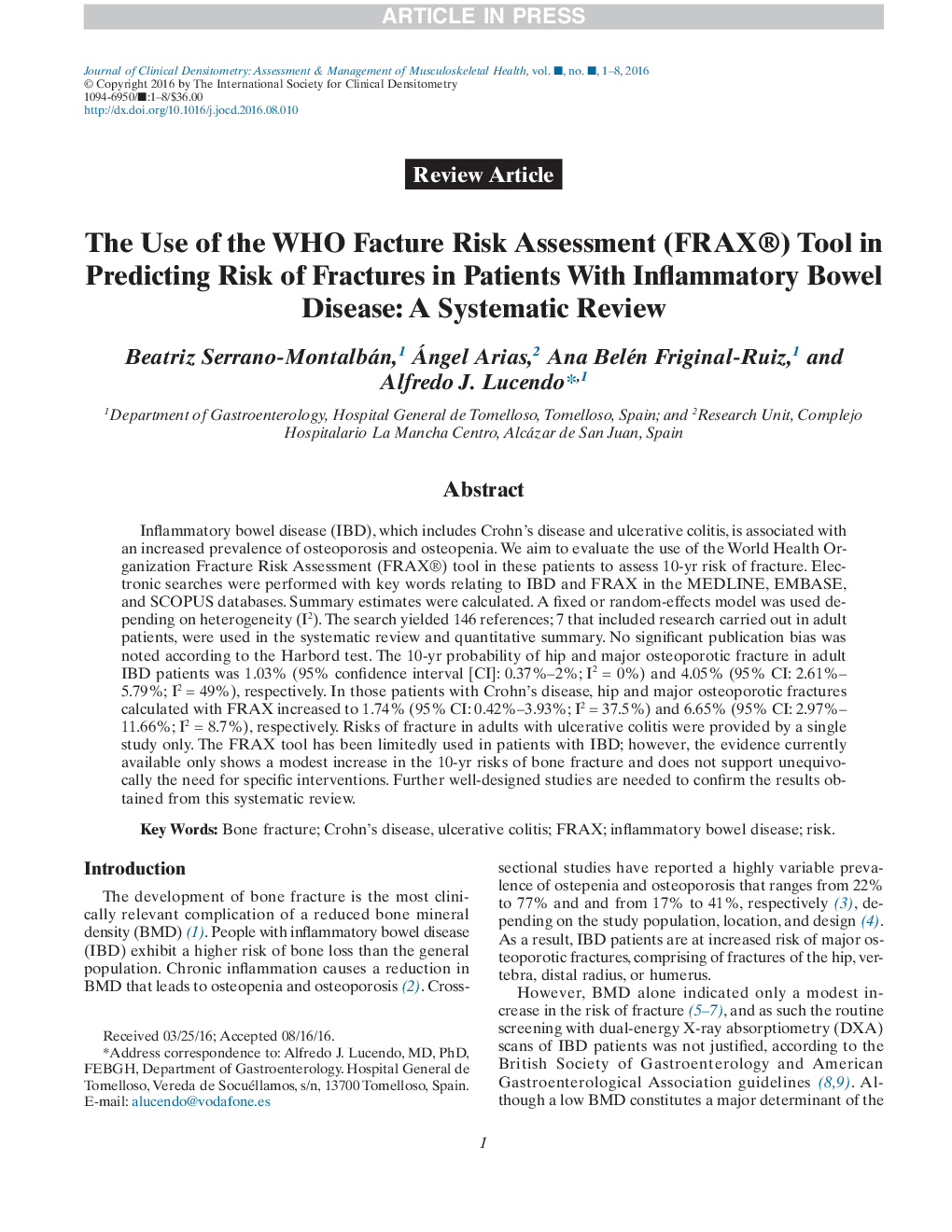| Article ID | Journal | Published Year | Pages | File Type |
|---|---|---|---|---|
| 8723094 | Journal of Clinical Densitometry | 2017 | 8 Pages |
Abstract
Inflammatory bowel disease (IBD), which includes Crohn's disease and ulcerative colitis, is associated with an increased prevalence of osteoporosis and osteopenia. We aim to evaluate the use of the World Health Organization Fracture Risk Assessment (FRAX®) tool in these patients to assess 10-yr risk of fracture. Electronic searches were performed with key words relating to IBD and FRAX in the MEDLINE, EMBASE, and SCOPUS databases. Summary estimates were calculated. A fixed or random-effects model was used depending on heterogeneity (I2). The search yielded 146 references; 7 that included research carried out in adult patients, were used in the systematic review and quantitative summary. No significant publication bias was noted according to the Harbord test. The 10-yr probability of hip and major osteoporotic fracture in adult IBD patients was 1.03% (95% confidence interval [CI]: 0.37%-2%; I2 = 0%) and 4.05% (95% CI: 2.61%-5.79%; I2â=â49%), respectively. In those patients with Crohn's disease, hip and major osteoporotic fractures calculated with FRAX increased to 1.74% (95% CI: 0.42%-3.93%; I2â=â37.5%) and 6.65% (95% CI: 2.97%-11.66%; I2 = 8.7%), respectively. Risks of fracture in adults with ulcerative colitis were provided by a single study only. The FRAX tool has been limitedly used in patients with IBD; however, the evidence currently available only shows a modest increase in the 10-yr risks of bone fracture and does not support unequivocally the need for specific interventions. Further well-designed studies are needed to confirm the results obtained from this systematic review.
Related Topics
Health Sciences
Medicine and Dentistry
Endocrinology, Diabetes and Metabolism
Authors
Beatriz Serrano-Montalbán, Ángel Arias, Ana Belén Friginal-Ruiz, Alfredo J. Lucendo,
